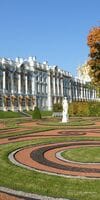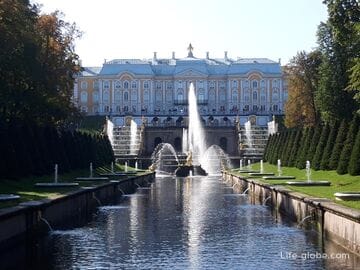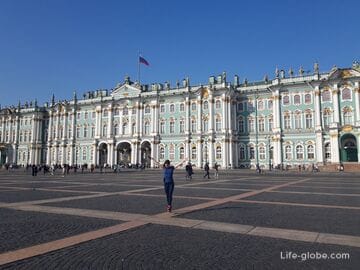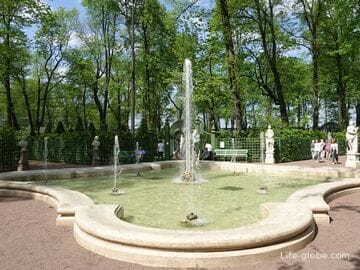The State Museum-Reserve "Tsarskoye Selo" is located in the Pushkin city of St. Petersburg (the former Tsarskoye Selo) and includes a palace and park ensemble of the 18th and 19th centuries (the former suburban ceremonial imperial residence), which is a monument of world architecture and landscape art, consisting of several parks,palaces and other buildings, some of which are now museums.
The origin and development of the palace and park ensemble in Tsarskoye Selo are associated with the liberation of the ancient Novgorod possessions off the banks of the Neva River from the power of the Swedish Kingdom.
In 1710-1720, on the site of the former Swedish estate, they began to create a country royal residence, which over time was upset and grew (palaces and parks were created), and eventually became the imperial summer ceremonial residence.
After the October Revolution of 1917, the palace and park ensemble was turned into a museum.
During the Great Patriotic War, the palace and park ensemble was significantly destroyed. After that, many of the objects were restored, including according to drawings, materials, photographs and preserved fragments of decoration.
In January 1983, the palaces and parks of the city of Pushkin (since 1937) were given the status of a reserve, which in 1990 received its current name: the State Museum-Reserve "Tsarskoye Selo".
Today, the Tsarskoye Selo Palace and Park Ensemble is a brilliant monument of world architecture and landscape art of the 18th-early 20th centuries, where the best examples of Baroque and classicism architecture are concentrated, and where the first Art Nouveau interiors appeared in the Russian capital (St. Petersburg).
The State Museum-Reserve "Tsarskoye Selo" includes three parks (Catherine, Alexander and Babolovsky) with palaces and pavilions, as well as detached buildings The duty stable with the exhibition "The Court carriage in Tsarskoye Selo", the Military Chamber and the Imperial Farm.
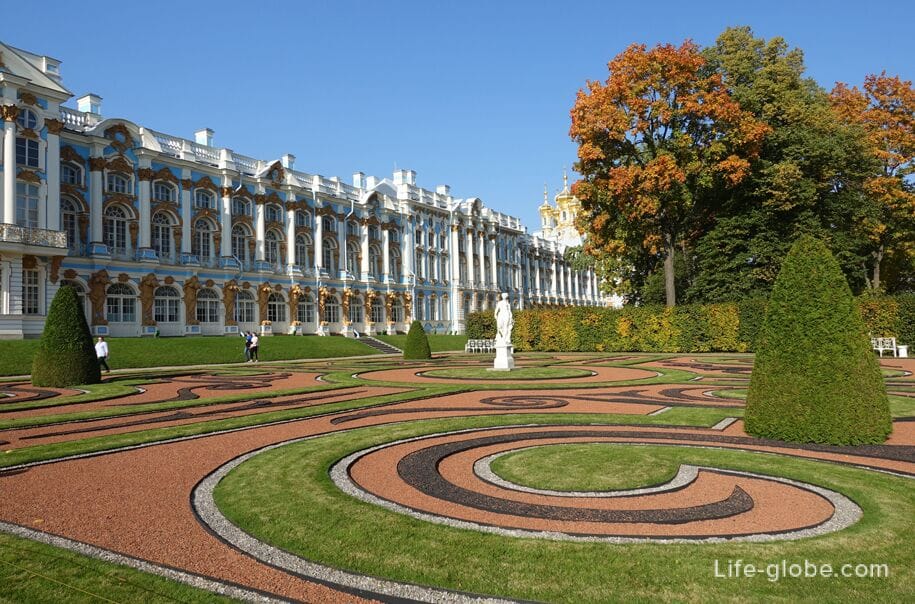
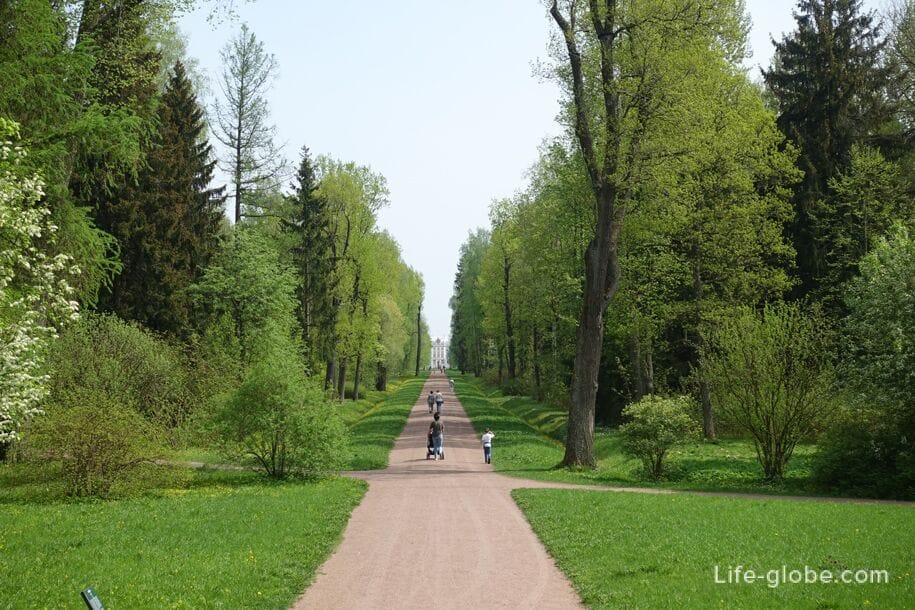
Catherine Park with the Catherine Palace
Catherine Park is a large park that is the dominant feature of the Tsarskoye Selo complex, as well as one of the most picturesque and visited parks in St. Petersburg.
The name" Catherine " park was named after the Catherine Palace located in the park, named in honor of Catherine I.
The compositional center of the park's ensemble is the Great Tsarskoye Selo (Catherine) Palace, which is a magnificent example of Russian Baroque with luxurious interior decorations in the spirit of the Elizabethan and Catherine eras with unique works of fine and applied art.
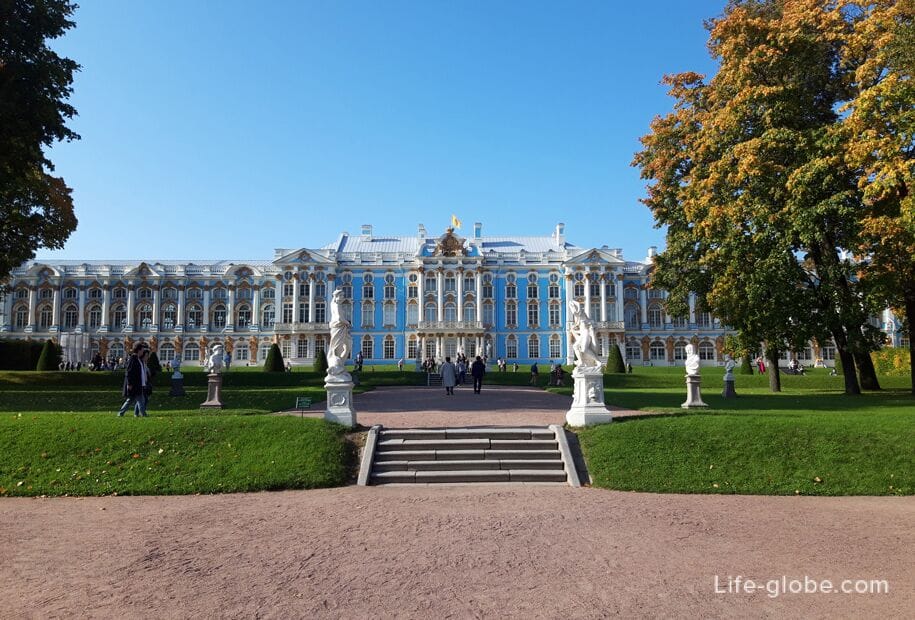
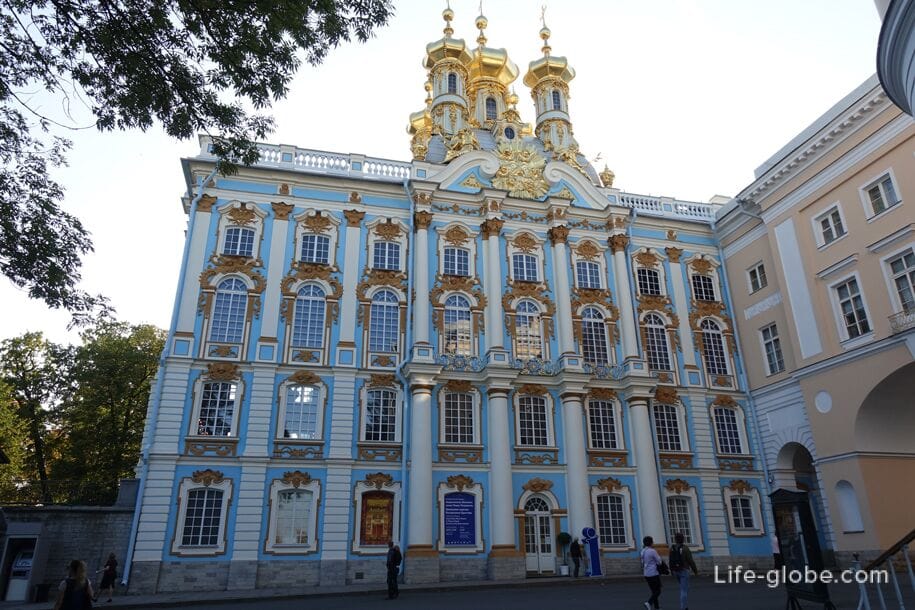
In the palace (for a fee) you can visit the restored palace halls, as well as (for a fee) - the church of the Catherine Palace (Resurrection of Christ) and the memorial museum-lyceum, located in the palace wings. Learn more about the Catherine Palace…
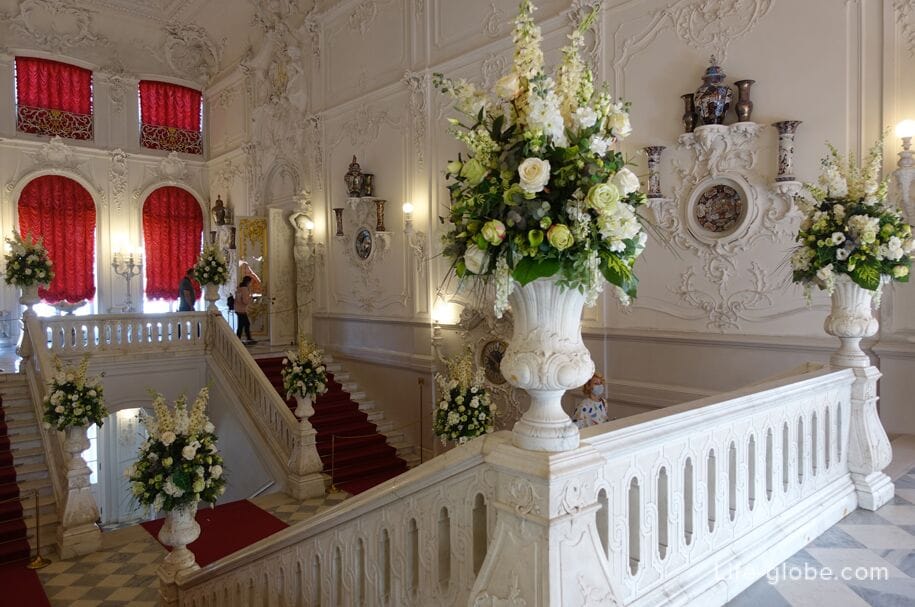
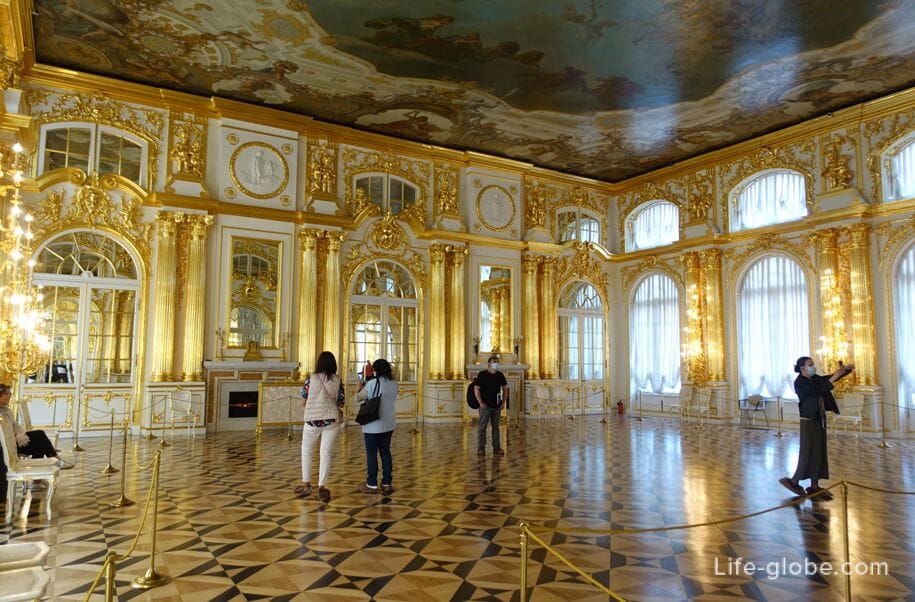
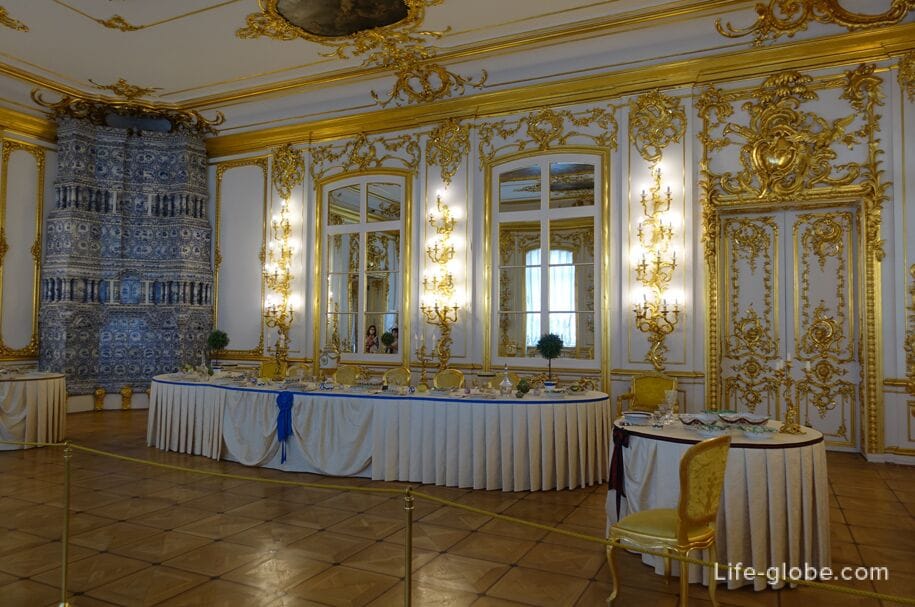
The Catherine Palace is adjacent to the Catherine Park of the same name, which has an area of more than 100 hectares.
The park consists of two parts: a regular Old Garden and a landscape English park.
On the territory of the Catherine Park there are: pavilions, some of which now contain museums, sculptures, monuments and bridges erected in various architectural styles, as well as piers, ponds, flower beds, alleys and walking paths with places for recreation.
Entrance to the park is paid. Learn more about the Catherine Park…
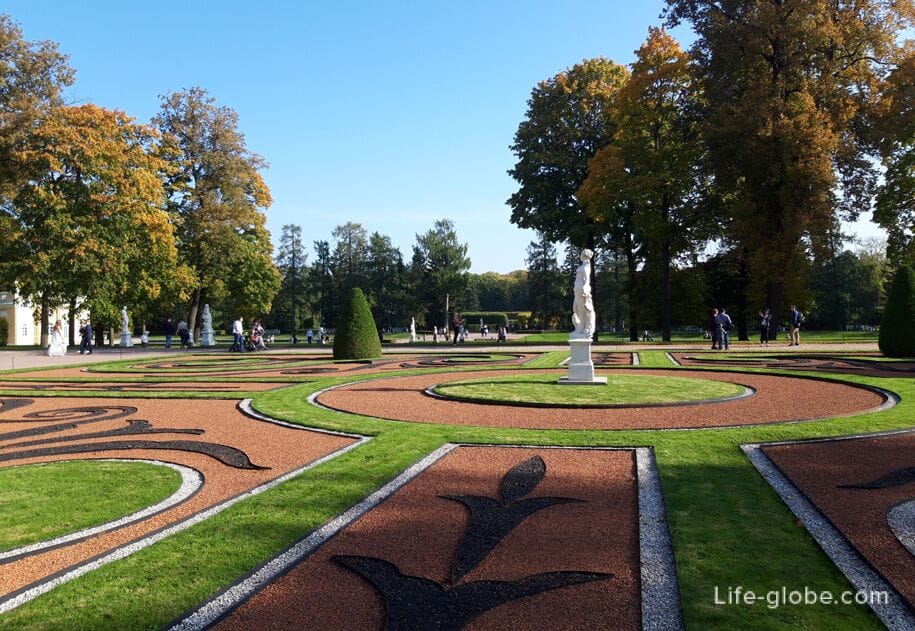
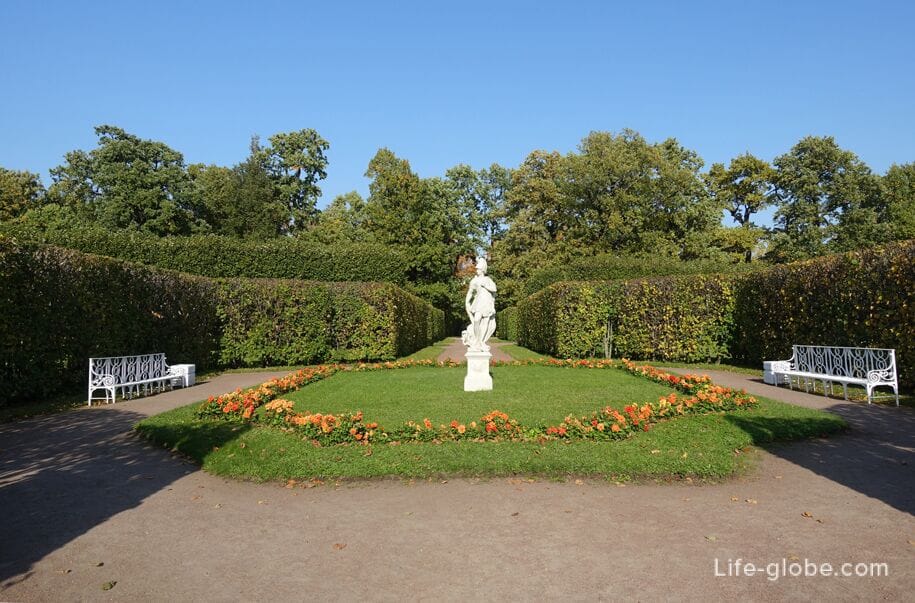
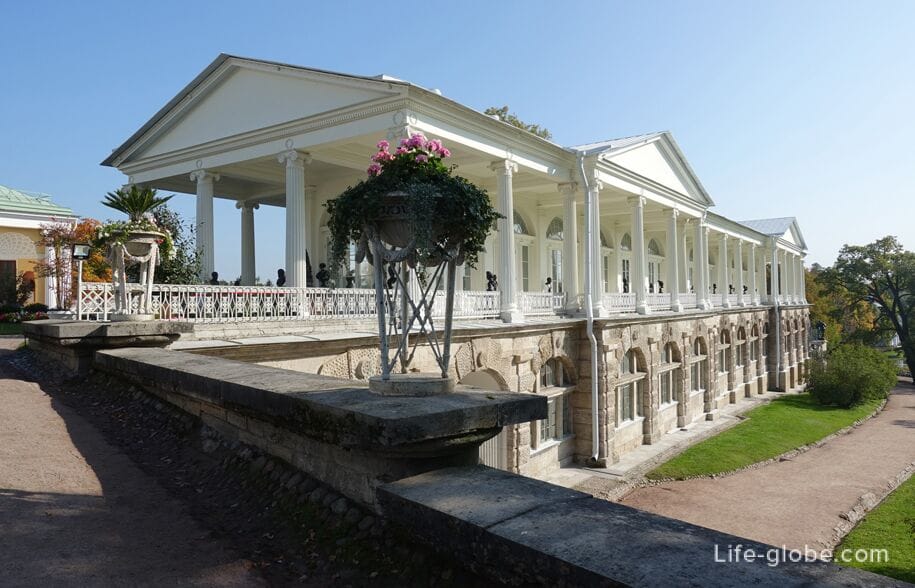

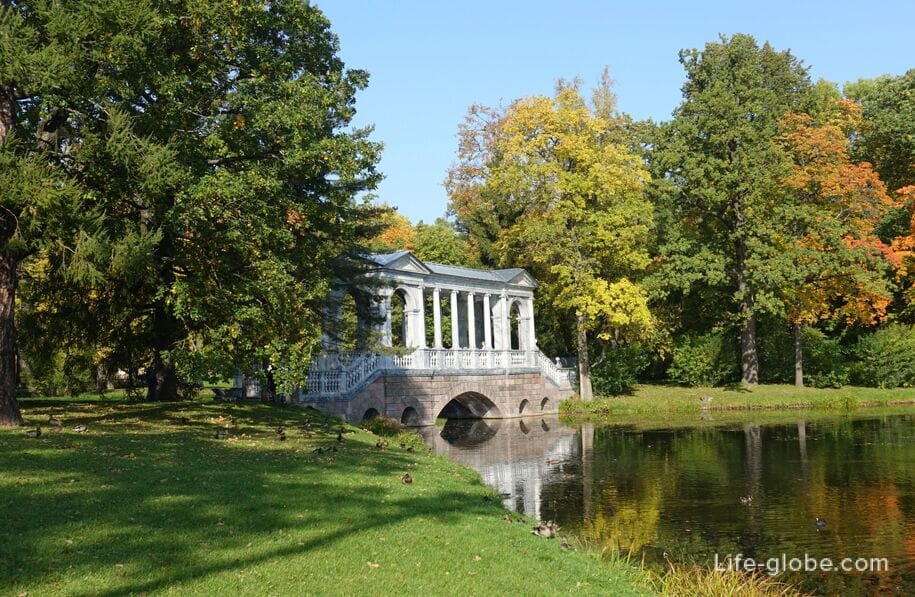
Duty stable with the exhibition "Court carriage in Tsarskoye Selo"
The building of the duty stable was erected in 1822-1827 according to the project of architects Vasily Petrovich Stasov and Smaragd Loginovich Shustov.
These were the emperor's own stables, located not far from the Catherine Palace with the adjacent park.
The building was damaged during the Great Patriotic War. It was later restored.
The permanent exhibition "The Court Carriage in Tsarskoye Selo" is located in the walls of the court stable today.
The exhibition presents a collection of 25 imperial carriages by Russian and Western European masters of the 18th and 19th centuries, including ceremonial carriages, as well as pleasure and city carriages, children's carriages and sleighs, which were once items of personal imperial use.
Entrance to the museum is paid.
The address of the museum: Sadovaya Street, 8. Learn more about the stable and the exhibition...
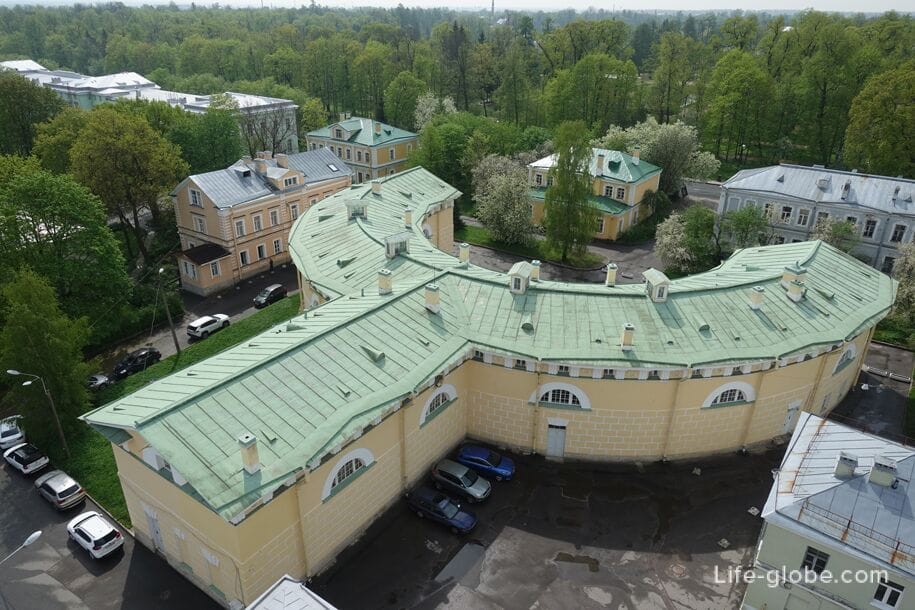

Alexander Park with the Alexander Palace
The Alexander Park, which has an area of about 200 hectares, is adjacent to the Catherine Park and the palace. and consisting of a New garden (a regular part of the park with a geometrically correct layout) and a Landscape Park.
The main dominant feature of the park is the Alexander Palace, which is one of the best creations of classical architecture.
The Alexander Palace (the old name of the New Tsarskoye Selo Palace) is one of the imperial palaces of Tsarskoye Selo, built in the style of Palladian classicism in 1792-1796 by the Italian architect Giacomo Quarenghi.
The palace was built by order of Empress Catherine II as a gift for the wedding of her grandson, Grand Duke Alexander Pavlovich (the future Emperor Alexander I) with Grand Duchess Elizabeth Alekseevna.
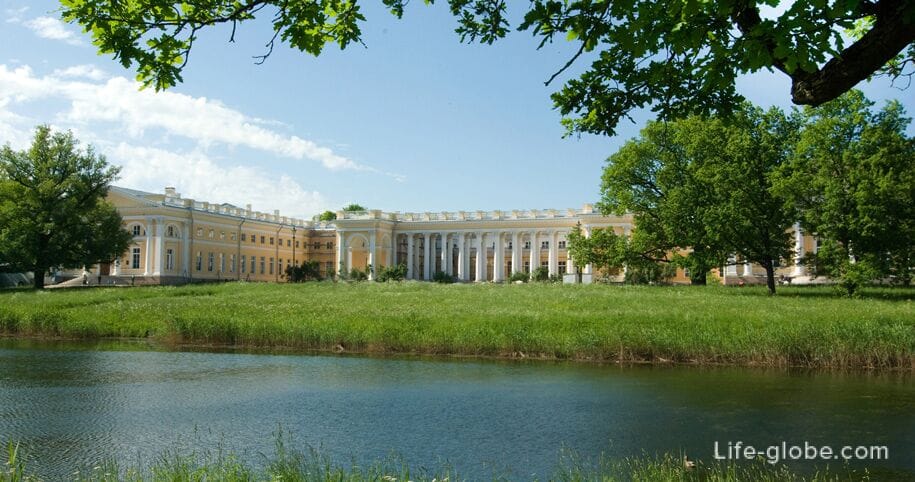
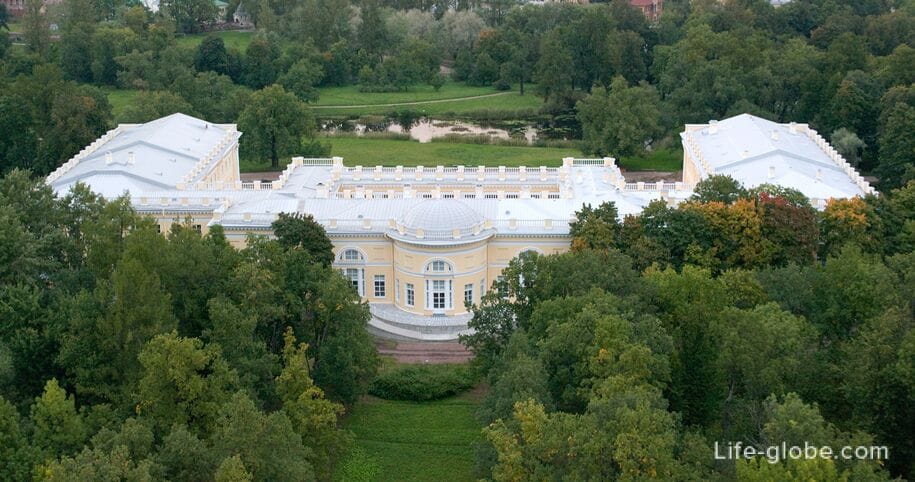
In the interior of the palace, in some rooms, the internal historical decoration has been partially preserved and the decoration has been fragmentally recreated.
The halls feature some of the apartment's interior items and personal belongings of the last Russian emperor and his family.
Within the walls of the palace there are: A corner living room, a hall with a slide, a Library, a State office of Nicholas II, a Moorish lavatory, a study, a Reception Room of Nicholas II, Bedrooms, a Lilac study of Alexandra Feodorovna, a Rosewood reception room of Alexandra Feodorovna, a Maple living room, etc.
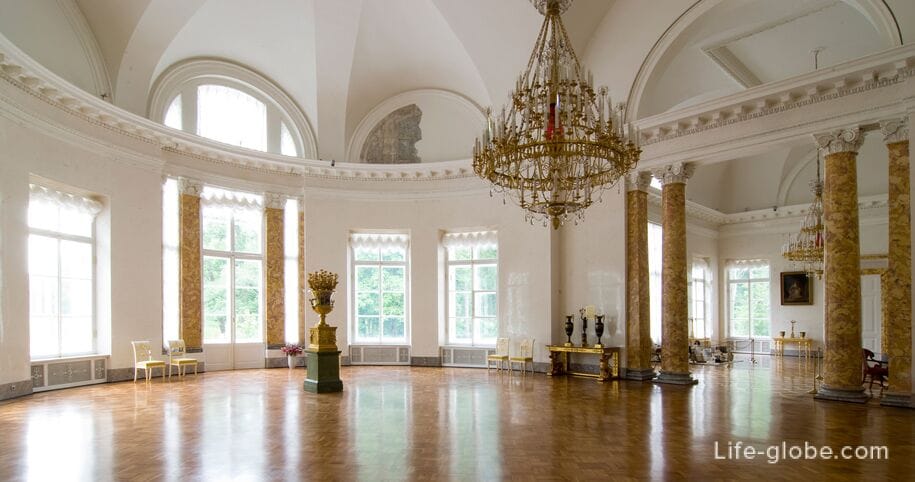
In addition to the palace, there are: pavilions located on the territory of the Alexander Park, one of which now houses museum (Arsenal), the White Tower complex, monuments and bridges erected in various architectural styles, as well as ponds, low hills, natural forest areas, alleys and walking paths with places to relax.
The entrance to the Alexander Park, with the exception of the entrance to the palace and the Arsenal pavilion-Museum, is free (free). Learn more about the Alexander Park and the Alexander Palace…
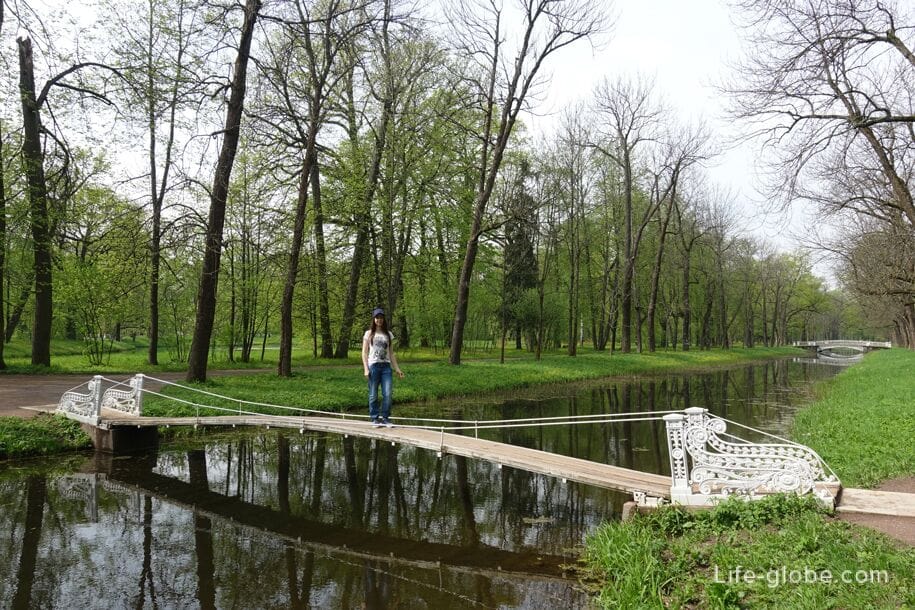
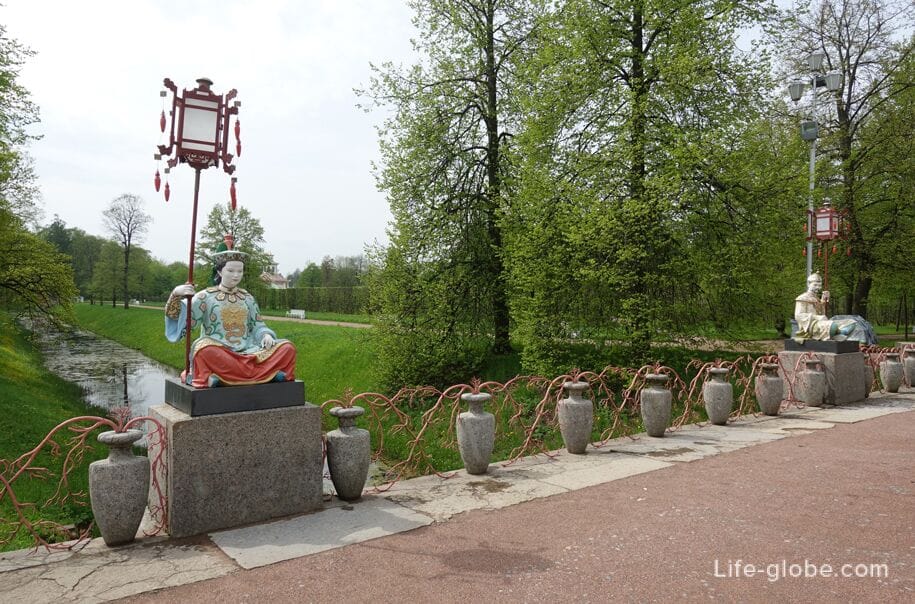


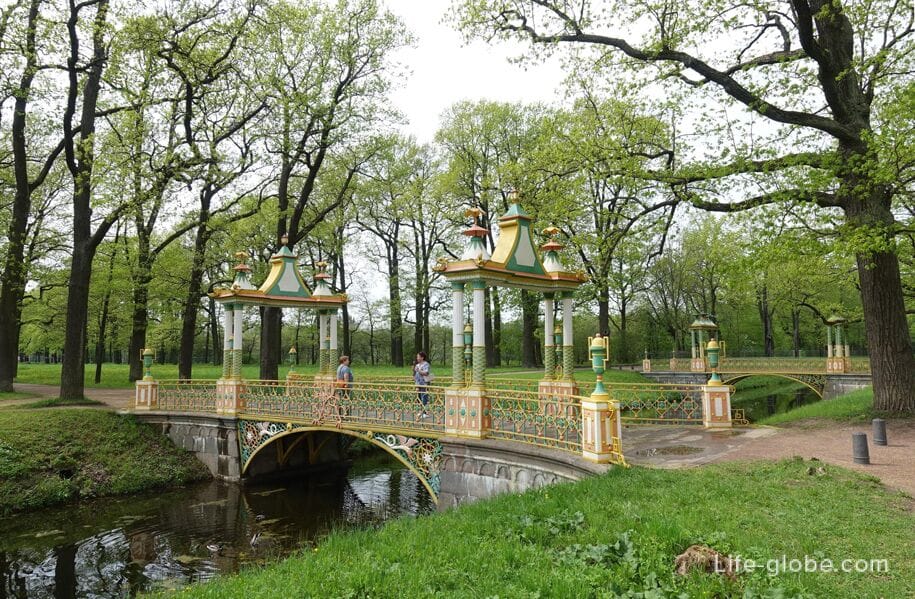
Military Chamber and Imperial Farms
The Imperial Farm and the Military Chamber are located in the northern part of the Alexander Park (now outside the park, across the Fermskaya Road).
The complex of the Imperial Farm was built by A. A. Menelas in 1818-1828 and consisted of a pavilion of the highest presence, a Dairy, a cowshed, sheds for merinos, a caretaker's house and other buildings on the meadows of the park adjacent to the complex of the Imperial Farm, where cattle were grazed.
At present, the best preserved buildings of the Imperial Farm are the Cowshed building and the Caretaker's House, built of red brick.
Now the Equestrian Complex of the museum-reserve is located on part of the territory of the former Imperial Farm.
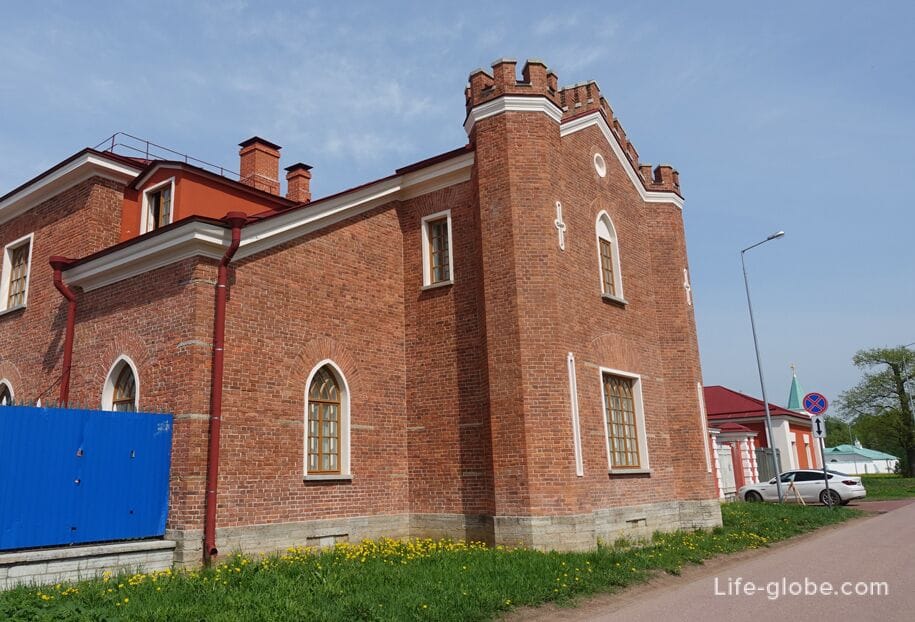

The military Chamber is a monument of architecture of the neo-Russian style and consists of a complex of buildings, in the center of which there is a courtyard.
The military history museum "Russia in the Great War", dedicated to the participation of the Russian Empire in the First World War, is located within the walls of the military chamber.
Entrance to the museum is paid. Read more about the Military Chamber and the Museum with photos…
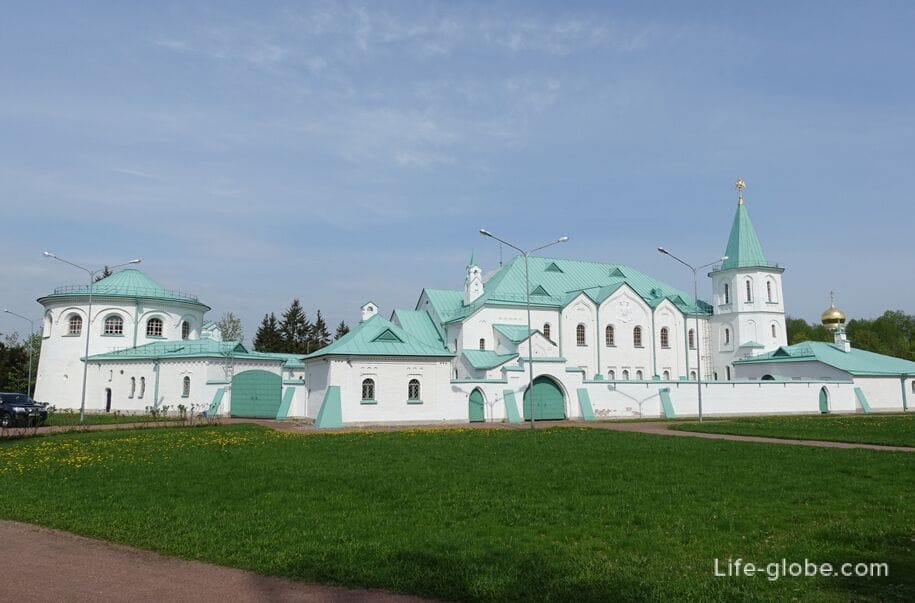
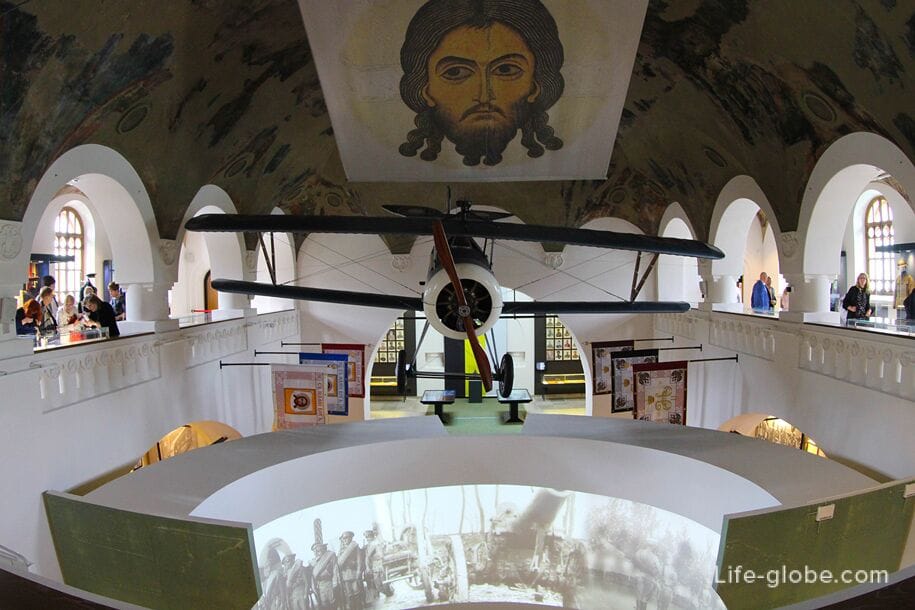
Babolovsky Park
Babolovsky Park is located between the southern part of the city of Pushkin and Alexandrovskaya.
Today Babolovsky Park is a public park with natural vegetation.
The main attraction of the park is the Babolovsky Palace-a bath pavilion of ten rooms, built in 1785 in the "Gothic taste" for Grigory Potemkin.
The palace is best known for its monumental granite bath-the "Tsar Bath", created by Samson Sukhanov in the 1820s.
The Babolovsky Palace was destroyed at the end of the Great Patriotic War, and is currently in a ruined state (restoration work is underway, the approximate completion date is October 2028).
Coordinates of the Babolovsky Palace: 59°42'31.0" N 30°20'39.0" E (59.708611, 30.344167).
The entrance to the park is free (free of charge).
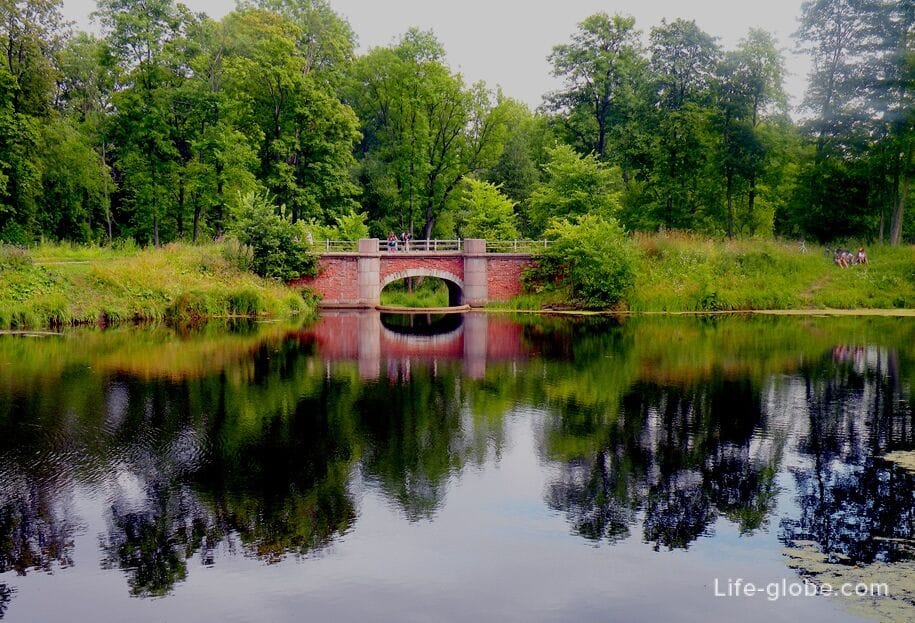
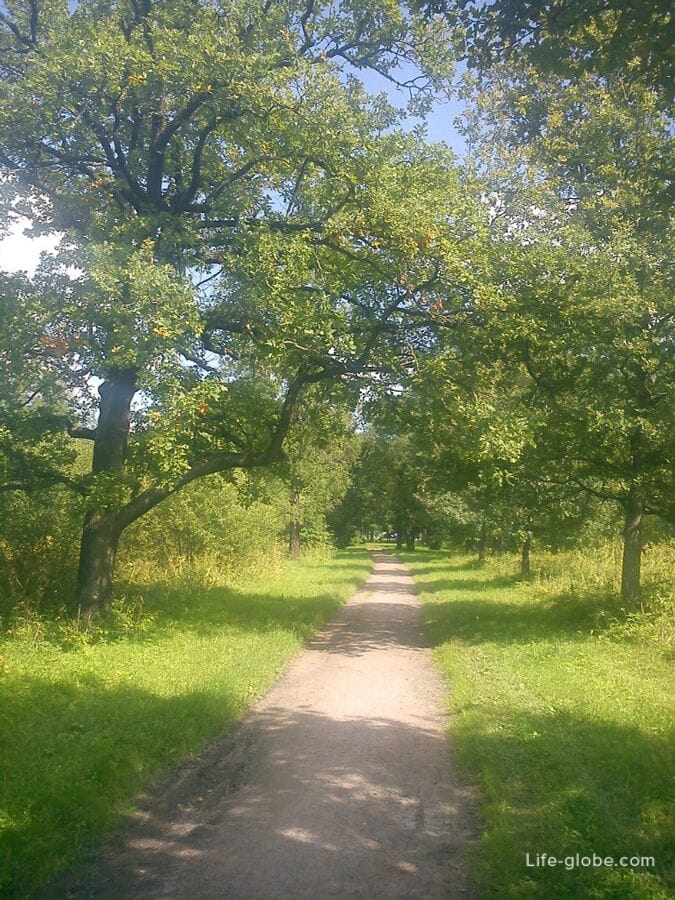
Practical information
For more information about the objects of the Tsarskoye Selo Museum-Reserve, opening hours, ticket prices, places and conditions for purchasing them and visiting the objects of the museum-reserve, we recommend checking on the website of the State Museum-Reserve "Tsarskoye Selo": tzar.ru.
You can find out about all the museums in Pushkin (Tsarskoye Selo) with photos, addresses and websites here →
You can visit Tsarskoye Selo (Pushkin) with one of the excursions
You can find out about all the ways to get to Pushkin from St. Petersburg (the airport and the city center) here →
In Pushkin (Tsarskoye Selo) you can stay
The 5-star Pevcheskaya Tower Hotel offers restaurants, a bar, a rooftop observation deck, free Wi-Fi and parking.
Breakfast is included in the room rate. Link to the hotel

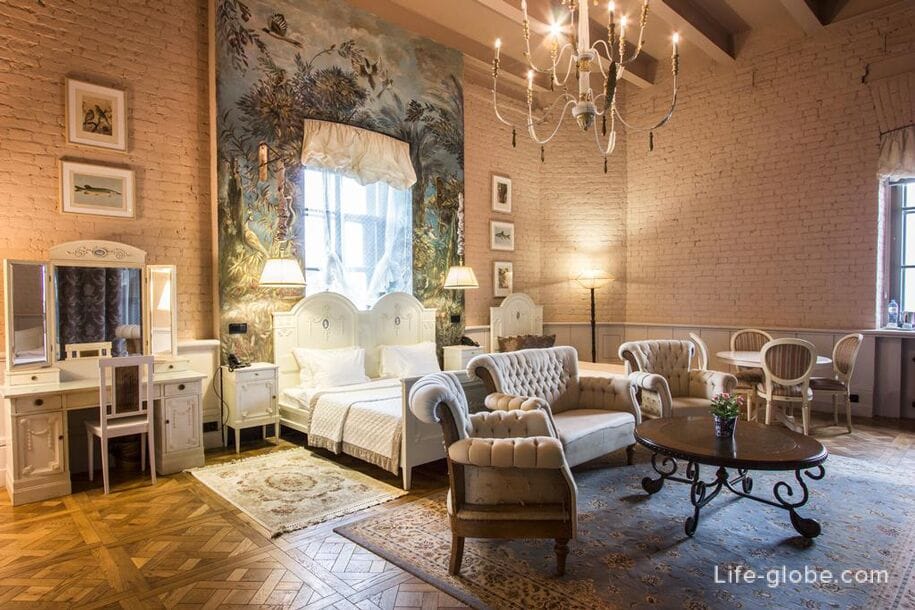
The 5-star luxury spa hotel "Tsar Palace Luxury Hotel & SPA"is located in a historic building.
The hotel has a spa center with a swimming pool, a hammam, a salt sauna, a snow fountain, steam baths and a gym; free Wi-Fi, a 24-hour front desk, 2 restaurants, a lobby bar, private parking and meeting and conference rooms.
The rooms are equipped with climate control, a mini-bar, a safe and a private bathroom.
A buffet breakfast is included in the room rate. Link to the hotel
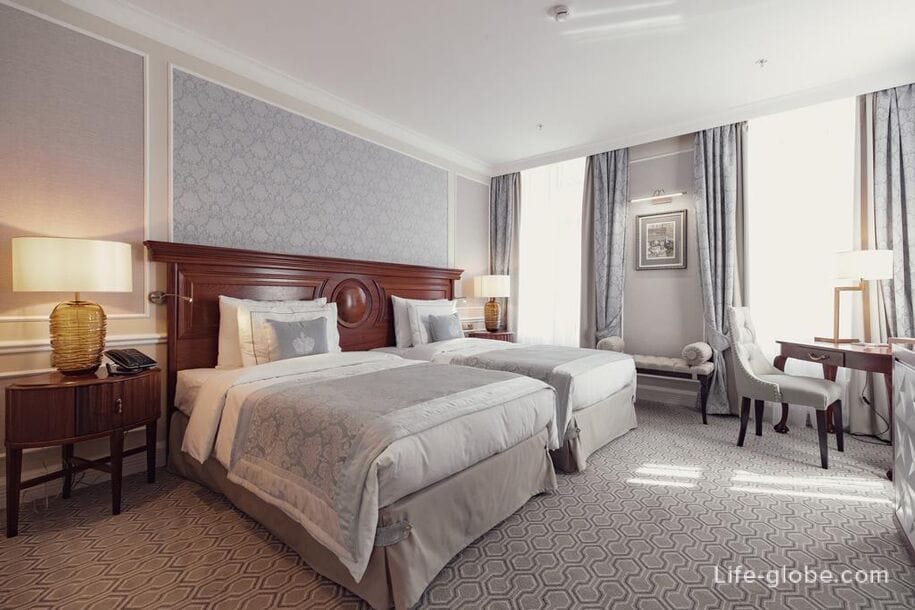
3-star hotel Ekaterina, located on the territory of the Catherine Palace and Park Ensemble.
At the hotel: 24-hour front desk, cafe, free Wi-Fi and parking.
The rooms are equipped with: air conditioning, TV, work desk and free toiletries.
Breakfast is included in the room rate. Link to the hotel
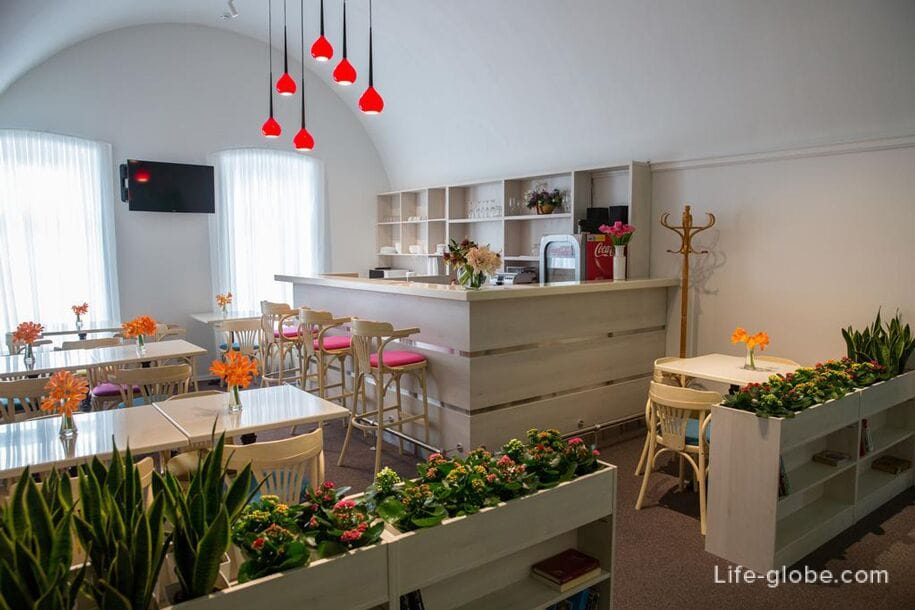
All accommodation facilities in St. Petersburg, including in the city center and in Pushkin, can be viewed and booked here




